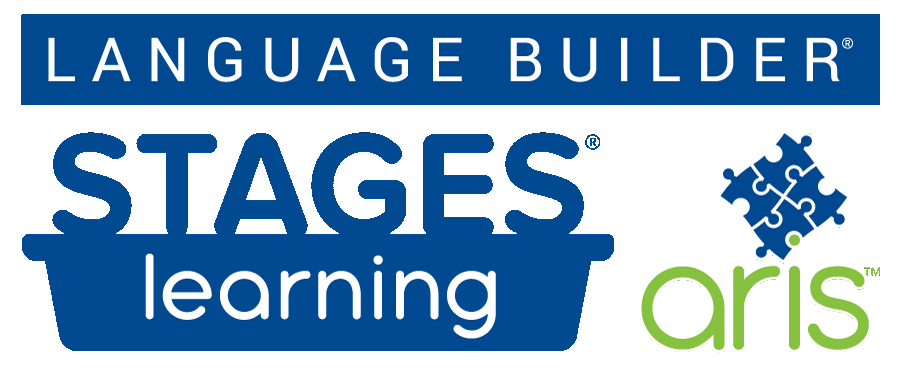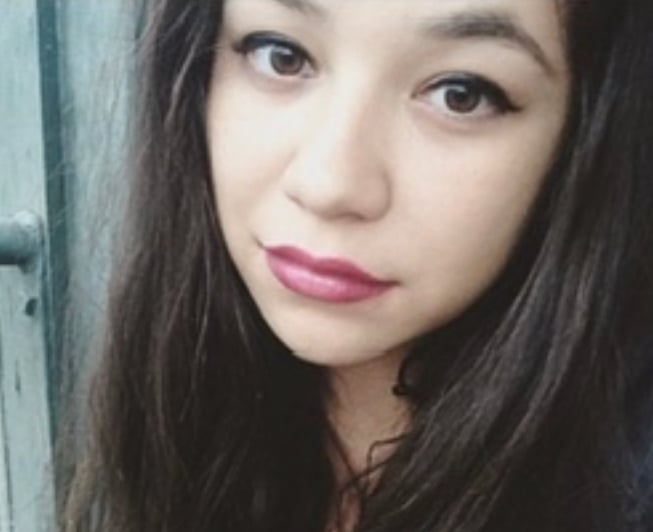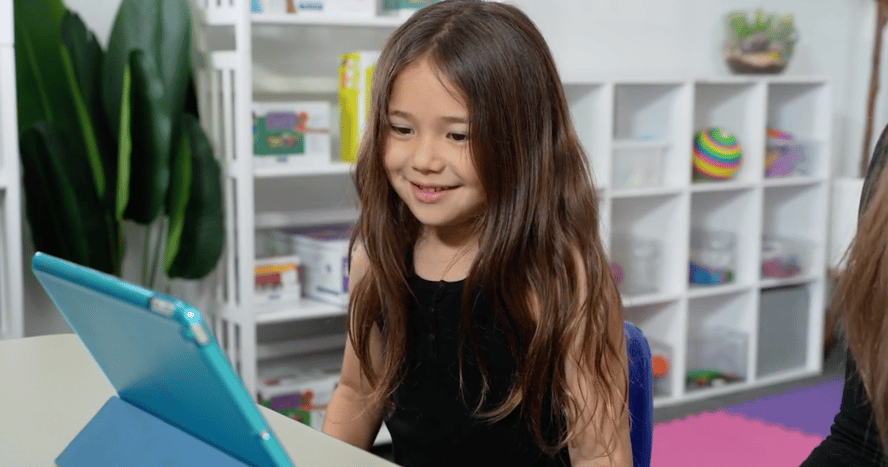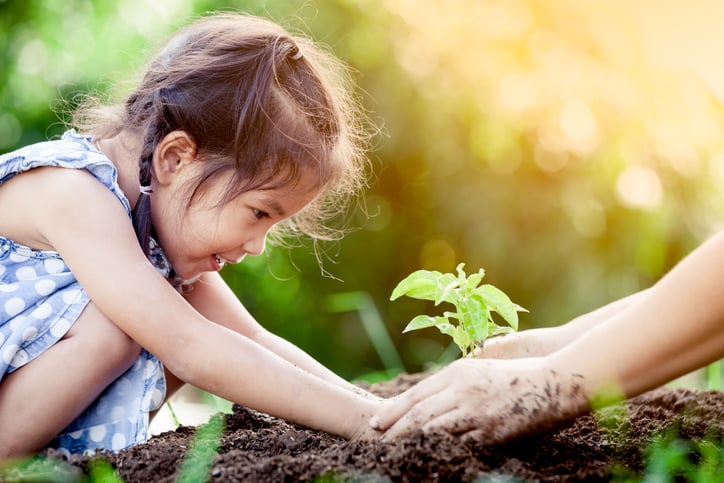
How the Magic of Gardening Can Help Picky Eaters
I’ll never forget my first garden. I was five and had just finished reading The Gardener by Sarah Stewart. It left me with this lasting impression of a romantic vision of giant beautiful gardens on rooftops in the city. My mom and I lived in a small apartment in the city like the character in the book. We went out to the back one day and started digging. I helped my mom plant all sorts of things. And I’ll never forget tending to the garden every day. Watering it and watching it grow, seeing magic before my very eyes. I was in complete awe when our sunflowers quickly towered over us. We took the seeds when they died and roasted them. I had never tasted anything better.
Picky eating is common among many kids, especially autistic and ADHD kids. Anything from a texture, color, or even just introducing new food can be not just unappealing but can cause instant disgust. It makes it especially hard to get kids the nutrients their bodies need. Getting kids involved with the process of getting food on the table is a great way to combat this. And that starts with gardening. I definitely did not acquire my mom's natural green thumb, so it has taken some trial and error when it comes to gardening, but it is so rewarding to grow your own food.
How to Get Started With Gardening
Getting started with your kids is simple, you can pique their interest with some good books. You can go to your local library or second-hand bookstore and pick up some books about gardening. I’ll put some good kid-friendly book options below. For adults, I recommend checking out the Epic Gardening channel on YouTube. Kevin is super helpful with tips for growing in all housing types/budgets and what to grow where. It’s a great channel for beginners.
How to Present Gardening to Your Kids
Don’t talk about gardening in an “I hope you eat this” type of way. Kids always respond to posi,,tive input over negative; you want to foster appreciation and interest. Describe what’s in front of you. Talk about how plants grow, their colors, their leaves, and their flowers. This also will provide moments of education. Count seeds, plants, flower petals, and leaves. Describe the colors of various vegetables and fruits. For older kids, you can talk about traveling nutrients and how carbon and nitrogen affect plants and soil, and you can dissect flowers and name the parts.
In colder months you can start a terrarium in a jar with your child. You can also start an herb garden in your window. There are many plants you can grow inside. If you live in an apartment or rental, don't worry. When we lived in a rental we found grow bags on Amazon that aren’t too expensive and are easy to move around.
What to Plant First
When you’re getting started with your garden, the first piece of advice I can offer is to plant what you will eat. This seems like a given, but you would be surprised at how quickly you get lost in the seed aisle grabbing things that look interesting. Staple items like potatoes, tomatoes, onions, garlic, carrots, spinach, and lettuce are a good place to start. I recommend planting something you know your kids like and will eat for sure, this will help interest them more. Raspberries are also very easy to grow and come back year after year with more berries. They don’t fruit till the second or third year though, just keep in mind.
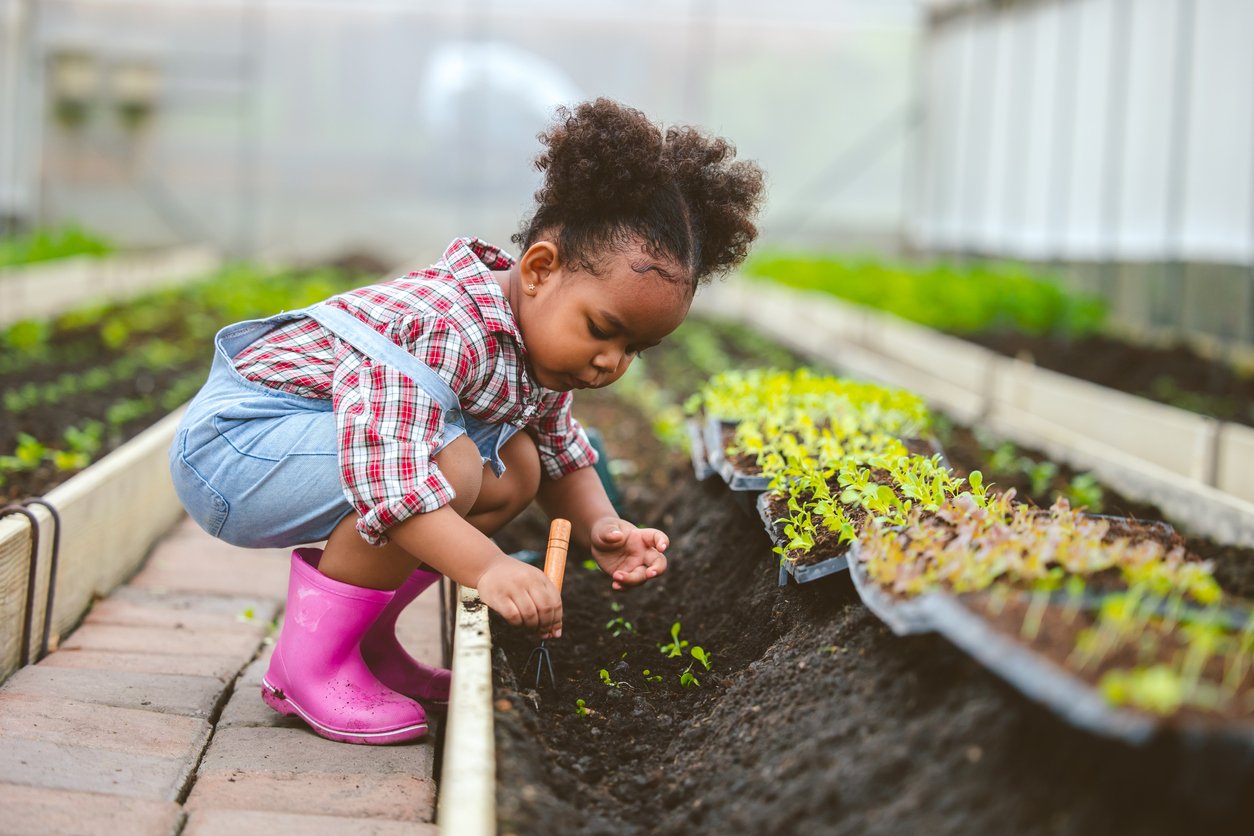
How to Integrate Sensory Play
Gardens are also a great way to get sensory play in. The calming environment of the outdoors, the warm sun, cool water, playing in the dirt, smelling flowers and herbs, and seeing different patterns, and tastes. Pinterest has some great sensory pathway inspirations that you can add to your garden for bare feet. You can have your kids paint rocks or popsicle sticks to indicate where you planted your seeds. They can make their own wind chimes and stepping stones.
What to Do With Dandelions
If you see dandelions in your yard, don’t be annoyed! These plants are sacred in my culture and are one of the oldest medicinal plants. They are nitrogen-fixing plants and help your soil and reduce the need for fertilizer, they are great for bees, and you can use every part of the plant. The more sunlight exposure to the leaves the more bitter they can taste, so it is best to harvest those in early spring, They have a sweet, mild flavor and can be added to salads, sautéed, steamed, boiled, or dried for tea. The flowers, if you remove the sepals or small leaves at the base of the flower, can be made into tea, wine, or even added to sweets. The leaves are a natural diuretic and aid the kidney, and the roots, which taste best in fall, support your liver and kidneys, you can dry them, grind them, and make them into a latte with warm milk and honey. The flowers are a good antioxidant, reduce inflammation, and regulate blood sugar.
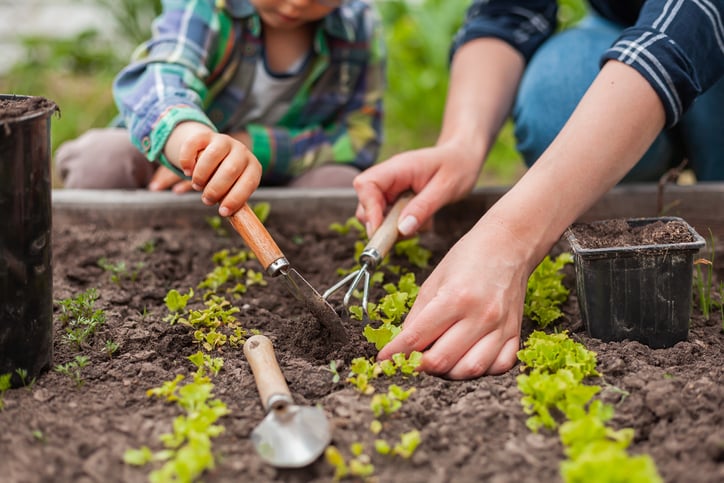
Involve the Kids in Preparing the Food
Once your garden is ready to be harvested, invite the kids to come help harvest and clean the fruit and vegetables. Don’t be afraid to bring them to the kitchen and let them help you prepare them. Even younger children and toddlers can be taught how to chop vegetables, just make sure they are using a kid-friendly knife and are supervised. You can find kid-friendly knives on Amazon or in Montessori stores online. (My twins started using knives and preparing their sandwiches at 18 months.) You can also prepare your food mise en place style, setting out all your premeasured ingredients in bowls, and having your kids add them to the dish according to your instructions. They will feel a sense of pride and accomplishment when the finished meal comes out and they will be excited to try their creation!
Below are some books I recommend. I like to include diversity so that my kids are exposed to a diverse array of people, so I listed that and the age group:
My First Garden by Wendy Cheyette Lewison (Asian-Toddlers)
Rainbow Stew by Cathryn Falwell (Black- Preschool)
Kids Garden by Whitney Cohen (Diverse- Preschool)
Lola Plants a Garden by Amy McQuinn (Black & there is a Spanish version- Preschool)
Growing Vegetable Soup by Lois Ehlert (Diverse- Preschool)
Como Crece Una Semilla by Helene Jordan (Hispanic- Elementary)
Our Community Garden by Barbara Pollak (Diverse- Elementary)
*The Gardener by Sarah Stewart (Elementary) This one was mentioned above; one of my favorites!
Carlos and the Squash Plant (Hispanic bilingual book- Elementary)
Seedfolks by Paul Fleischman (Diverse- Middle school)
Botanicum by Kathy Willis and Katie Scott (Beautiful book for ages 4 to adult)
Diary of a Young Naturalist by Dara McAnulty (middle/high school) Dara is a 17-year-old autistic author and the youngest recipient of the RSPB medal.
